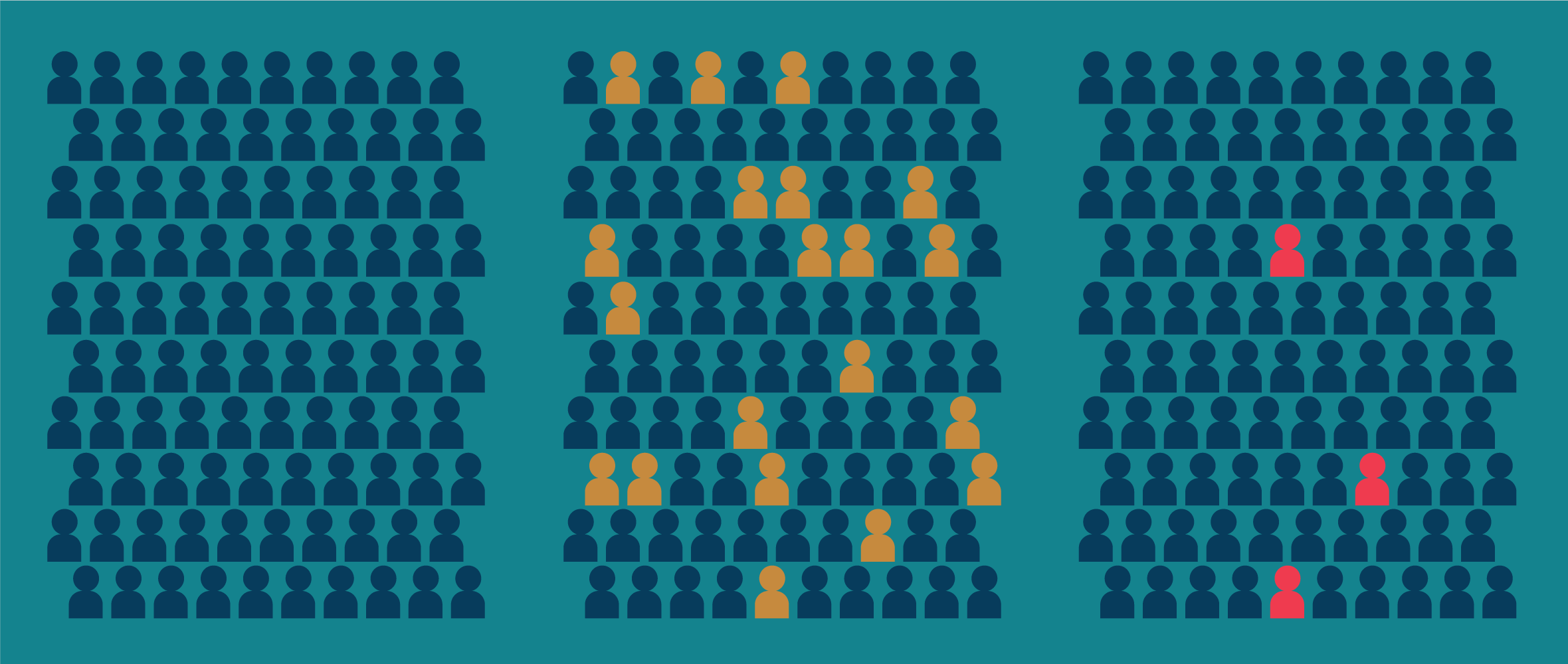

Contact Jen to learn about how we can deliver results for you.
My status as a “50-something mom of two boys” could mean a lot of things to marketers. But my status as a “50-something mom of two boys who co-owns a business, hates shopping, supports local businesses, and is willing to pay more for original clothing and artwork” means a lot more to marketers. Why?
For the most part, all demographic data tells marketers is the likelihood that someone could be a fit for a product or service. Meanwhile, psychographic data—like attitudes, habits and opinions—helps isolate the types of people who are more likely to convert. Think of the two types of data as an audience scoring system:

Left to right: everyone, entire potential audience, those with the highest likelihood of conversion.
KW2 believes all marketing strategy should start with the customer. And to get a razor-sharp definition of your consumer, you need to move past age and gender.
Psychographic data plays a critical role in creative concepting and message development. Messaging that resonates with the “emotional” reasons to purchase (versus “rational” reasons like price or features) is often based off of a psychographic insight or characteristic.
That’s why emotional, psychographic insights need to inform the media plan, and that’s why our media team uses audience insights to develop all targeting recommendations. By identifying behavior triggers and influencers, we are able to isolate media tactics and targeting that play off those triggers. While TV and radio are still transacted on demographics, digital media was moved the industry toward more tightly-defined audience targeting. We use online and offline signals like mobile location and purchase data to reach online audiences beyond simple demographics.
To develop audience profiles for marketing planning, we rely on a mix of third- and first-party data. We mine this data from many sources, including:
We combine information from these sources to build a profile of the audience most likely to engage with our clients’ products or services. These profiles make creative more meaningful and paid media placement more accurate—which result in a positive experience for the end user, and higher conversion rates for the client.
Psychographic data laid the foundation of our work for Berkshire Hathaway Travel Protection (BHTP). Their AirCare flight protection is travel insurance designed to alleviate the stress of business travel through a simple mobile interface. The product could appeal to any frequent traveler—likely adults 25+ with a household income of $75k+. So KW2 worked with BHTP to move beyond demographics and hone in on the audience most likely to buy AirCare—the Digital Elite Traveler:
Building out this intended audience psychographically was instrumental in developing the media mix and creative concept for the product.
So, marketers, listen up—I may be a mom of two boys, but you need to dig deeper, get inside my head, my heart and my life, and market to me accordingly.